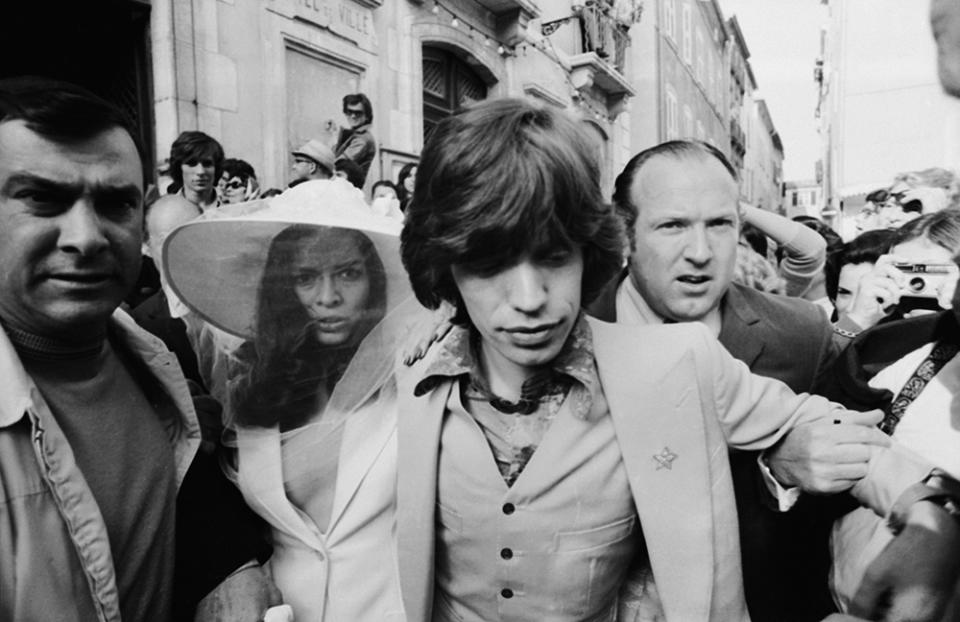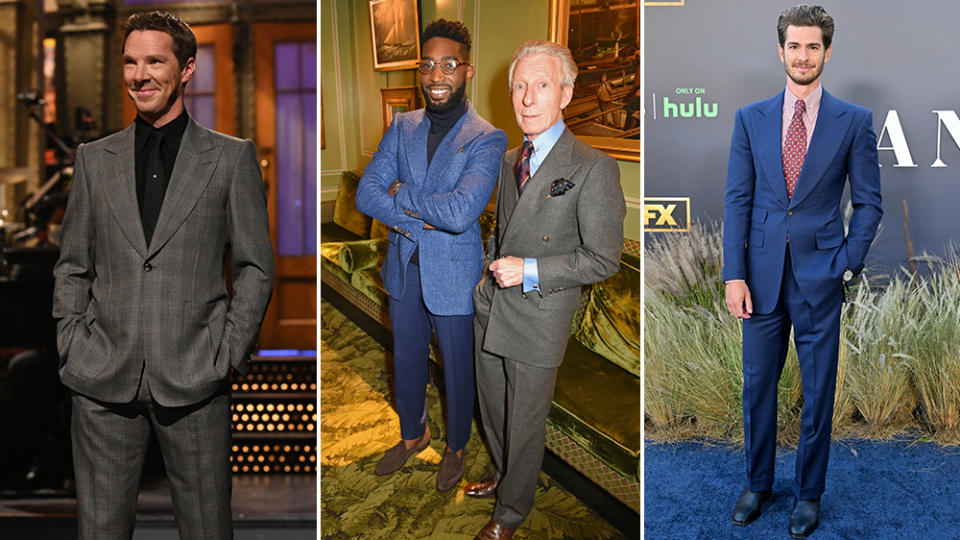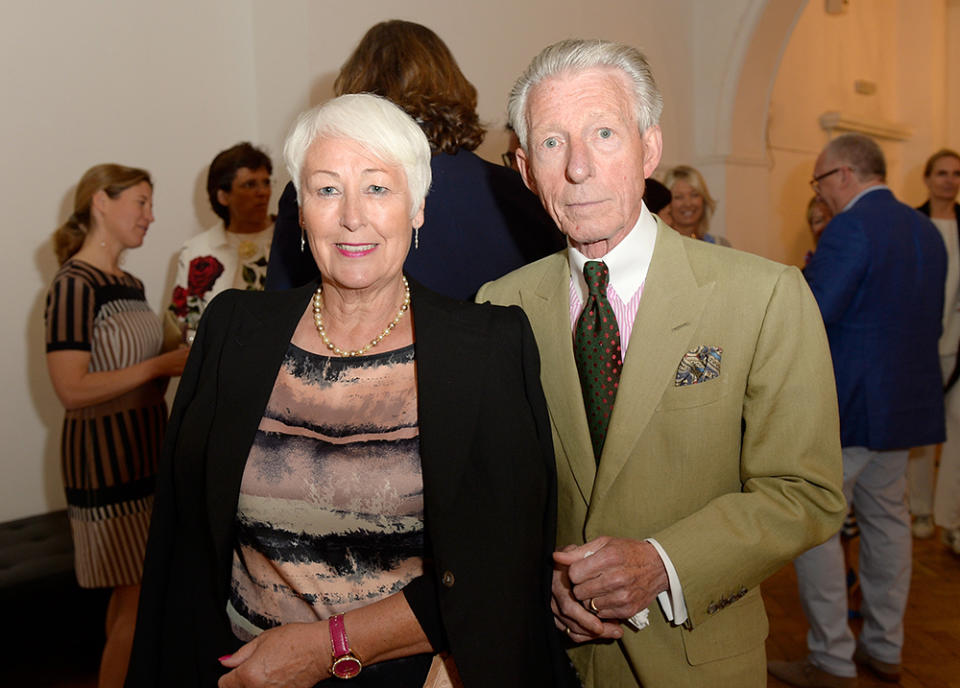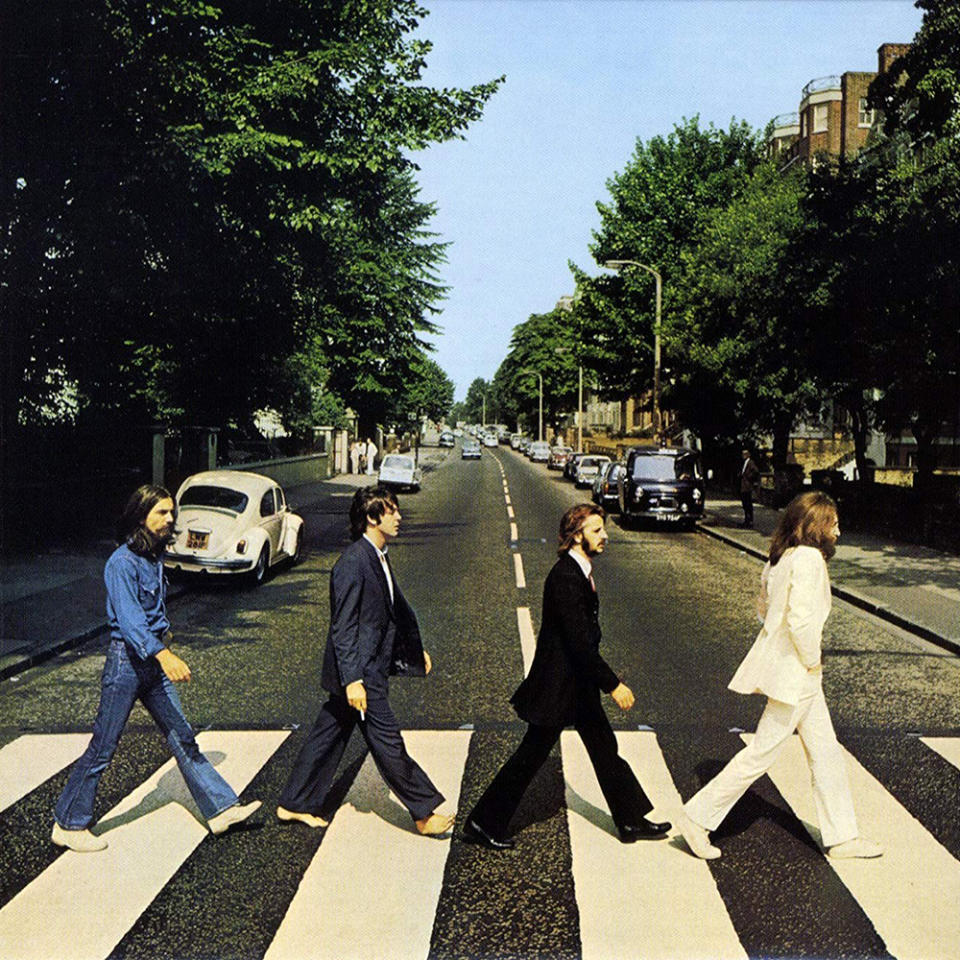Legendary Tailor Edward Sexton, Who Dressed Stars From the Beatles to Harry Styles, Is Dead at 80

- Oops!Something went wrong.Please try again later.
- Oops!Something went wrong.Please try again later.
Edward Sexton, who died on July 23 at age 80, had arguably more influence on men’s bespoke tailoring than any other name over the last 50 years. A diminutive figure, Sexton was a giant in the world of men’s style. His sculptural suiting had attitude and panache, and he became a go-to for leading figures in the entertainment and business worlds. Here, Robb Report writer—and Sexton’s client and friend—Aleks Cvetkovic talks about the impact the charismatic figure had on him.
I first met Edward Sexton when I was 22 years old, and a newly hired assistant at a men’s style magazine in London. Walking into his mahogany-paneled tailoring studio in Knightsbridge felt like entering another world—a Dickensian place filled with hissing steam irons and pinstripe-clad men with tape measures slung around their shoulders. To me, as an aspiring style writer, Edward was a living legend; the man who’d made British tailoring sexy in the 1970s, and who was admired throughout the fashion industry as one of Savile Row’s most talented craftsmen.
More from Robb Report
This British Soccer Team Just Got Stylish New Uniforms to Wear Off the Field
Omega's First Paris 2024 Olympics Watch Is Going for the Gold
Menswear's Favorite Running Brand Is Coming to a City Near You-in a Converted Van
They say don’t meet your heroes, and the first couple of times I visited the Sexton studio he was formidable, a kind of sartorial Gordon Ramsay, who kept tight reins on his workshop with a cigarette constantly between his lips. I remember standing in the fitting room wearing some new flannel pants that I’d just picked up, only for him to say over my shoulder, as though I wasn’t there, “Funny pair of trousers he’s wearing.” On another occasion, he told me flatly that I’d gained weight and was making his job to fit me too difficult. These moments always made me chuckle—I figured as a master tailor he’d earned the right to dress down a whippersnapper.
He was, though, exceptionally generous with his time and inducted me into the arcane world of bespoke tailoring that I’d always wanted to experience. When, after several visits just to spectate, he and his creative director, Dominic Sebag-Montefiore, offered to cut me a suit I practically skipped out of the place singing.
An Edward Sexton suit is more than a piece of clothing. It’s a cultural artifact with more than 50 years of pioneering creativity underpinning it. Sexton was born in 1942 in East London, and started to work in tailoring aged just 12, when he began to run errands at his uncle’s workshop. He went on to work in some of the most prestigious bespoke tailors of the day (on Savile Row and off) through his teens and 20s, before meeting Tommy Nutter in 1966 and deciding to open infamous celebrity tailor, Nutter’s of Savile Row, on Valentine’s Day 1969.
In keeping with its reputation for doing things differently, Nutter’s was the first Savile Row tailor to adopt an “open window” approach, with the interior of the shop and a wealth of extraordinary mannequins visible from the street. (Previously, Savile Row shopfronts were draped with curtains and were highly intimidating places.) The shop’s shamelessly open frontage revealed chocolate carpets and mirrored walls. Tuxedos hung from trashcans and dotted around the room was a chorus line of stuffed rats sporting diamond chokers. It was, in every way, a revelation.

It’s hard to overstate the impact that what became known as “The Nutters look” had on popular culture. Sexton’s tailoring referenced the Hollywood film stars of the 1930s and ‘40s (think Cary Grant or Humphrey Bogart in Casablanca), but with a svelte, figure-hugging silhouette that was cutting-edge in the 1970s. Jackets were constructed with dead-straight shoulders, sweeping lapels, and sculptural waistlines, while trousers were unashamedly tight. For the first time, Savile Row tailoring became a symbol of creativity and sex appeal—and it had a viral impact on fashion in a time before the internet.

Over the course of his career, Edward dressed Mick and Bianca Jagger (for their wedding), Andy Warhol, Sir Hardy Aimes, Naomi Campbell, The Beatles (for the Abbey Road album cover and their final gig on the roof of the Apple Building at No. 3 Savile Row), David Bowie, and Elton John, to name just a few celebrity clients. Mark Ronson, Adam Lambert, Tinie Tempah, and Chris Pine have all rocked Sexton too. While Edward was working in America in 1987, U.S. President Ronald Reagan flew him to the White House in a helicopter, to dress the first daughter, Susan. More recently, Harry Styles wore a series of dramatic, block-colored suits for his first solo global tour in 2017, and just a few weeks ago Rick Astley opened his 2023 Glastonbury set in a grapefruit-pink Edward Sexton suit.
Despite his impressive client list, Edward always remained humble and focused on his art. As I got a little older and became a client, we’d sit in his studio together with cups of scalding tea and chat about family, life, how my career was going (or not), and what kind of designs he was into at the time. He was always thinking about clothes, and contemplating what he’d like to create next.

Fittings with Edward were almost therapeutic. You realized pretty quickly that he wanted to concentrate, not do small talk, so you’d stand quietly and follow him working around you. While most tailors might slip a jacket onto your shoulders and stand back and look at you from afar, Edward would feel his way through a fitting; checking how the garment was sitting against your shoulder blades, or your collar bones, or through your spine. He’d seek out quirks in your physique that he’d then mask or accommodate. In that sense, his suits were truly sculptural. I always used to think of him as having healing hands, which would pass over your body and brush away imperfections as he checked your jacket. Your silhouette was the easel, and he was the artist.

In recent years, the Sexton brand has gone from strength to strength, in large part thanks to Sebag-Montefiore’s efforts to launch ready-to-wear collections and an e-commerce business. In 2020 Sexton and Sebag-Montefiore returned the brand to Savile Row, a street Edward left when he moved to Knightsbridge in 1990. This was followed by the opening of a chic new flagship store on the street just last year. He was the first winner of Robb Report’s Best of the Best Lifetime Achievement Award in the style category in 2019, and won a Visionary Award in 2022 from Walpole, a leading British luxury trade group.
He leaves behind an extraordinary legacy, as a tailor who shaped men’s fashion, with the unique ability to cut suits that make you feel like a movie star—whether or not he liked the pants you wore when you walked in.
Best of Robb Report
Sign up for Robb Report's Newsletter. For the latest news, follow us on Facebook, Twitter, and Instagram.


